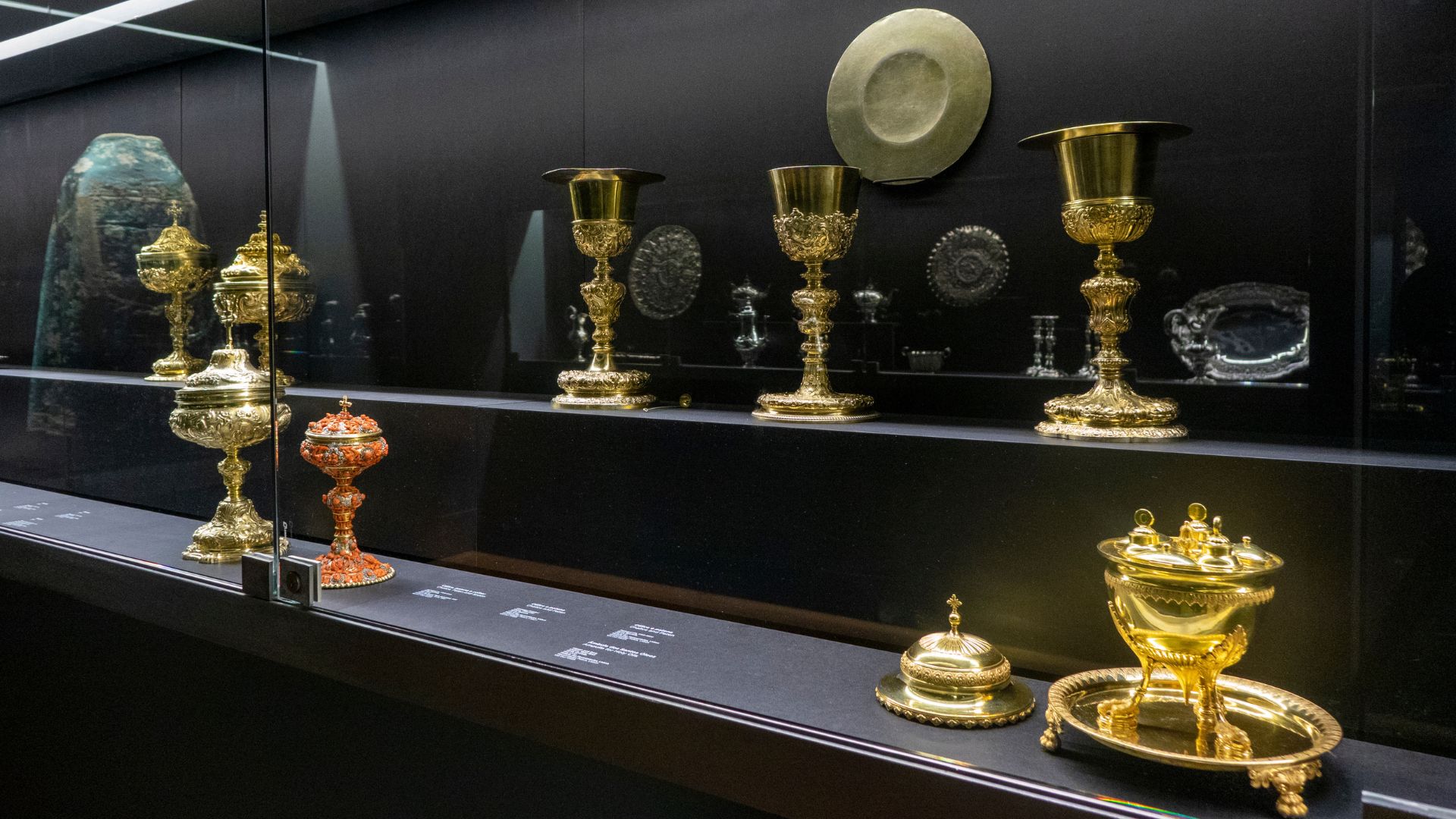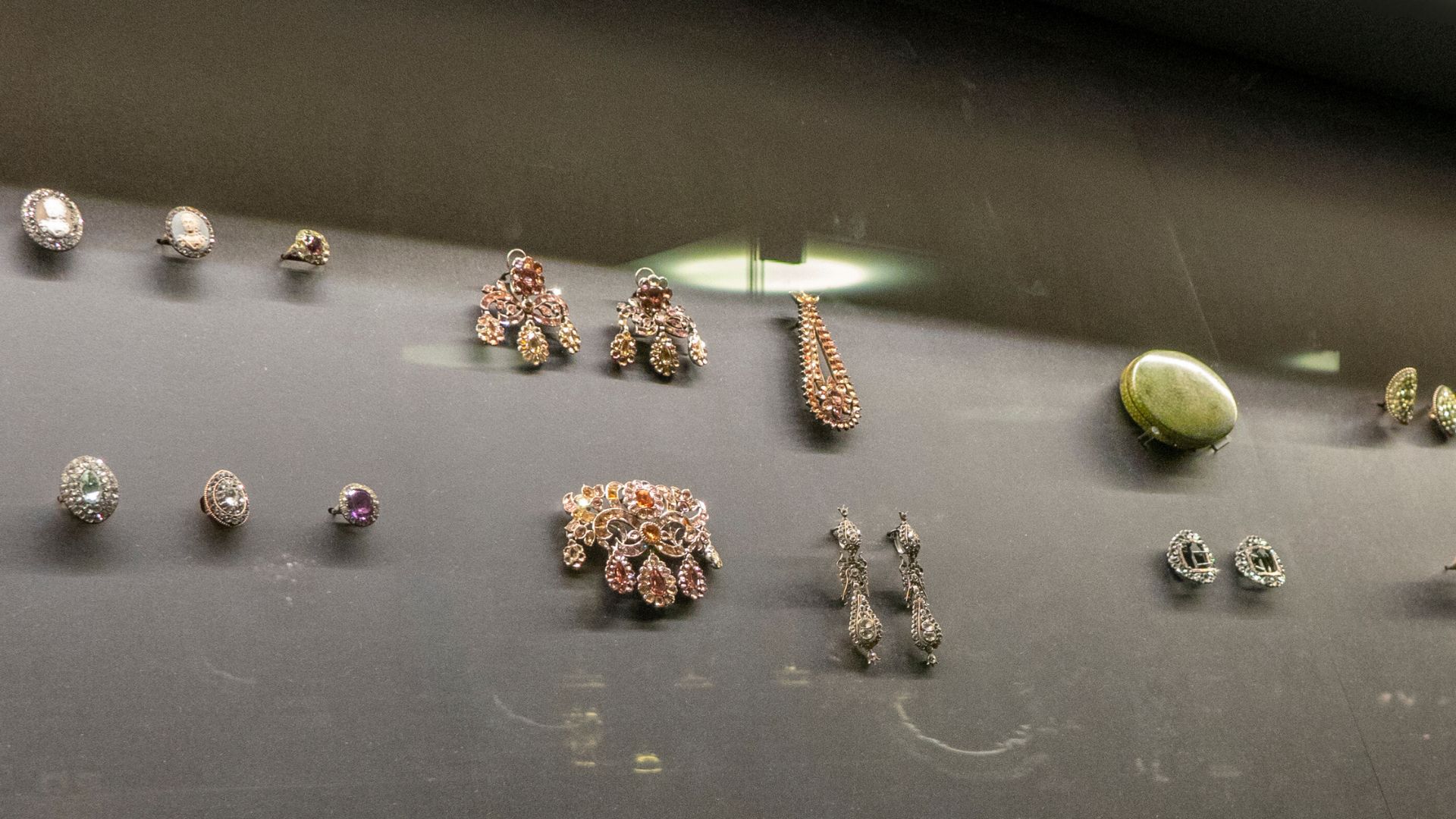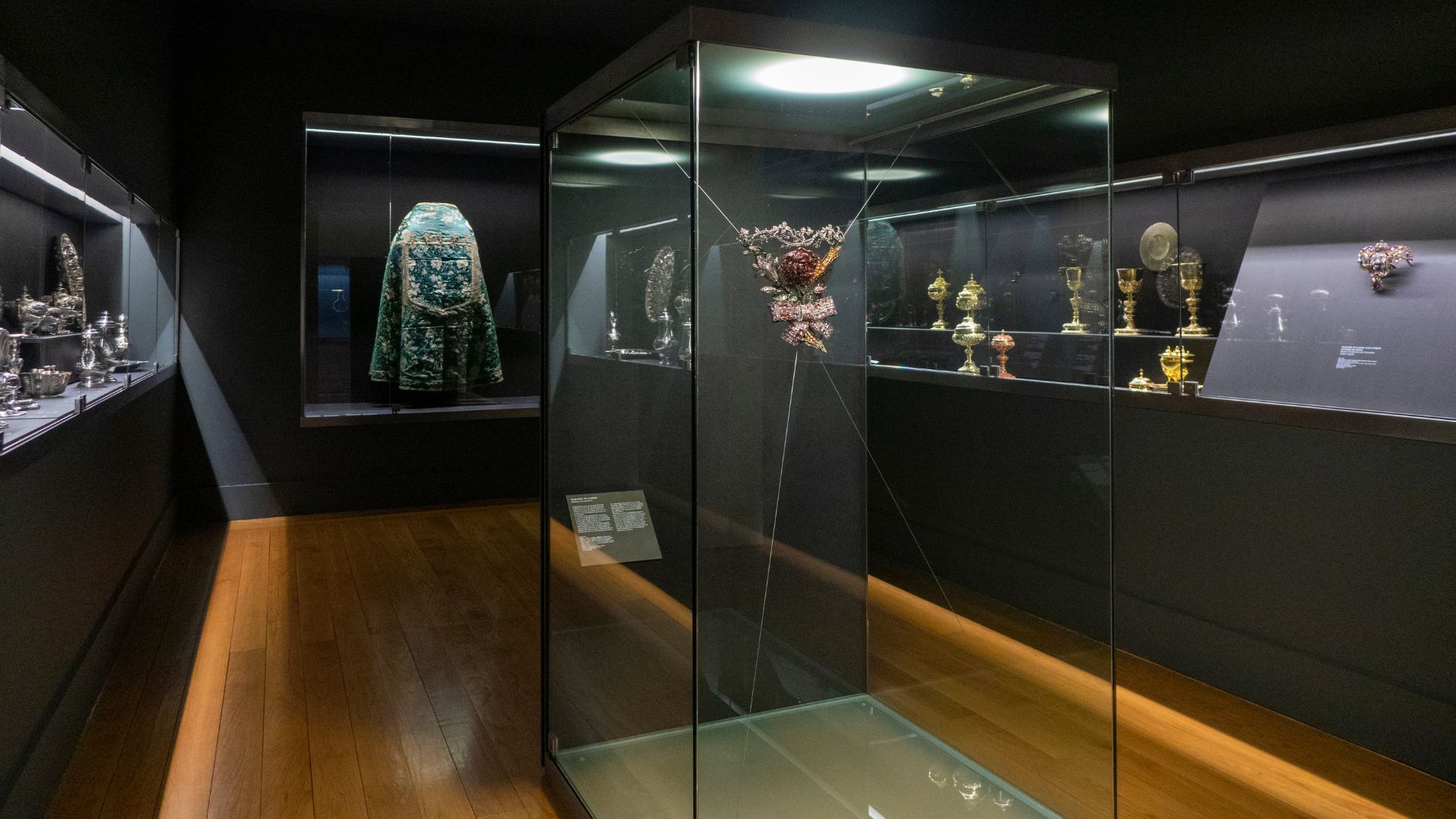The Goldwork and Jewellery collection at the Soares dos Reis National Museum was set up in 1932, with the incorporation of a number of objects from the estate of the Episcopal Palace of Porto. The collection grew with the addition of pieces from extinct convents, royal palace collections, donations and one-off acquisitions.
The deposit of the Porto City Council’s collections in the Museum in 1937 significantly enhanced the Jewellery collection, enriching it with a varied set of jewels from the collection of the former Municipal Museum.
The Soares dos Reis National Museum’s long-term exhibition features several pieces covering different chronological periods, from pre-Roman times (900 BC) to the 19th century.
Props were used as body adornment, amulets, a form of social distinction or a symbol of power. The pair of gold bracelets and the Estela Treasure are important testimonies to the history of goldsmithing and noble metals in Portugal.
These pieces of jewelry prove that metalworking was already mastered in the distant past. Showing contacts with people from Central European and Mediterranean cultures, they reflect the knowledge of decorative forms and techniques, as well as the process of fusing metals that has continued to this day.
Goldwork of the 18th century
The exploration of gold mines and precious stones in Brazil had a strong impact on Portuguese jewelry from the first half of the 18th century, reflecting the luxury and opulence of a wealthy society. The Bodice Ornament, with the image of Our Lady of Mount Carmel in Lisbon, is a remarkable expression of this splendor.
The excessive taste for jewelry was reflected in the diversity of personal adornments for men and women: necklaces, pins and rings, shoe buckles, insignia, among others.
Among the civil and religious silver pieces, national production stands out, with two major centers represented – Porto and Lisbon. Foreign production is represented by craftsmen and workshops from Italy and Germany.
Jewelry and personal accessories
Jewelry and accessories for personal use from the 17th to the 19th century followed the changes in European fashion. In the 19th century, there was a widespread taste for jewelry linked to important moments in personal life and the expression of feelings, such as pendants with miniature portraits as a reminder of a loved one or family event. Rings were worn as mere adornment or as a symbol of authority, love, widowhood or friendship. Religious-themed jewelry could include crucifixes or pendants depicting the Virgin, Christ or saints. Snuff boxes (ground tobacco), some displaying delicate portraits, bear witness to the widespread habit of snuff consumption throughout Europe.



